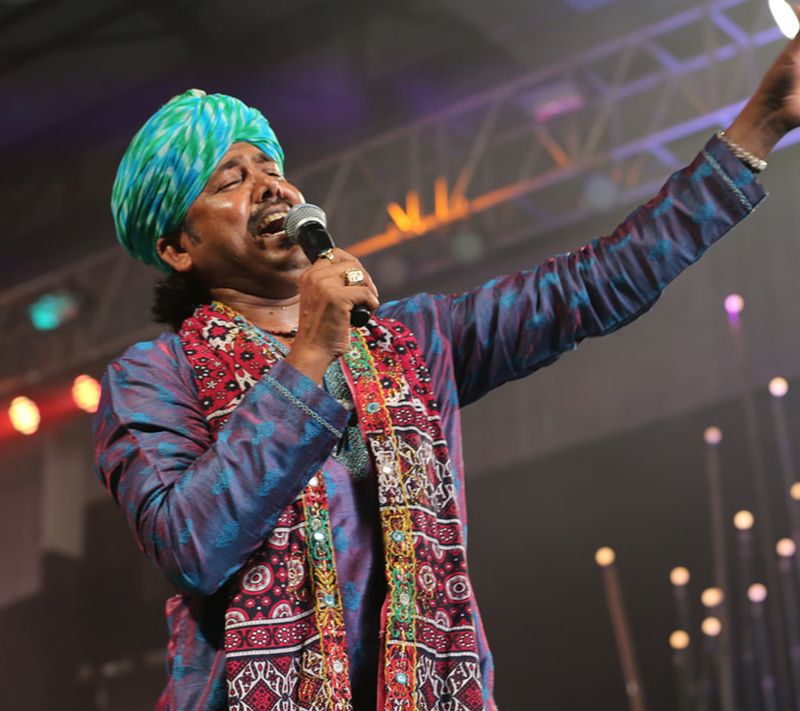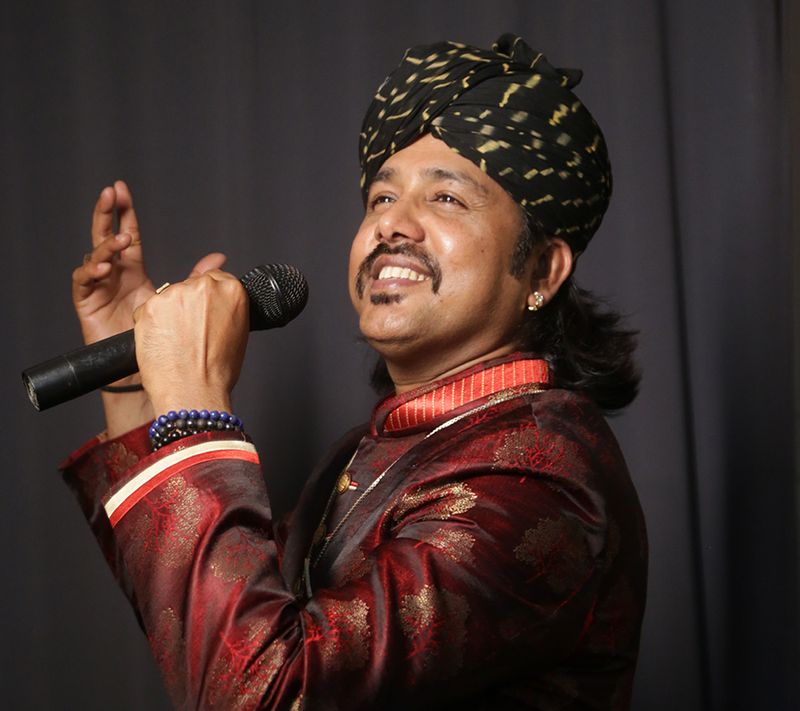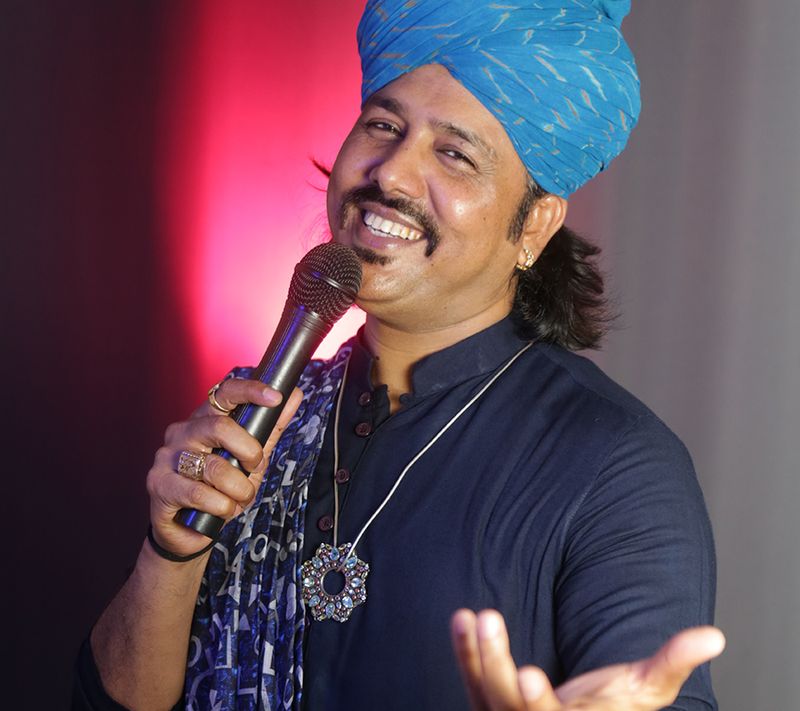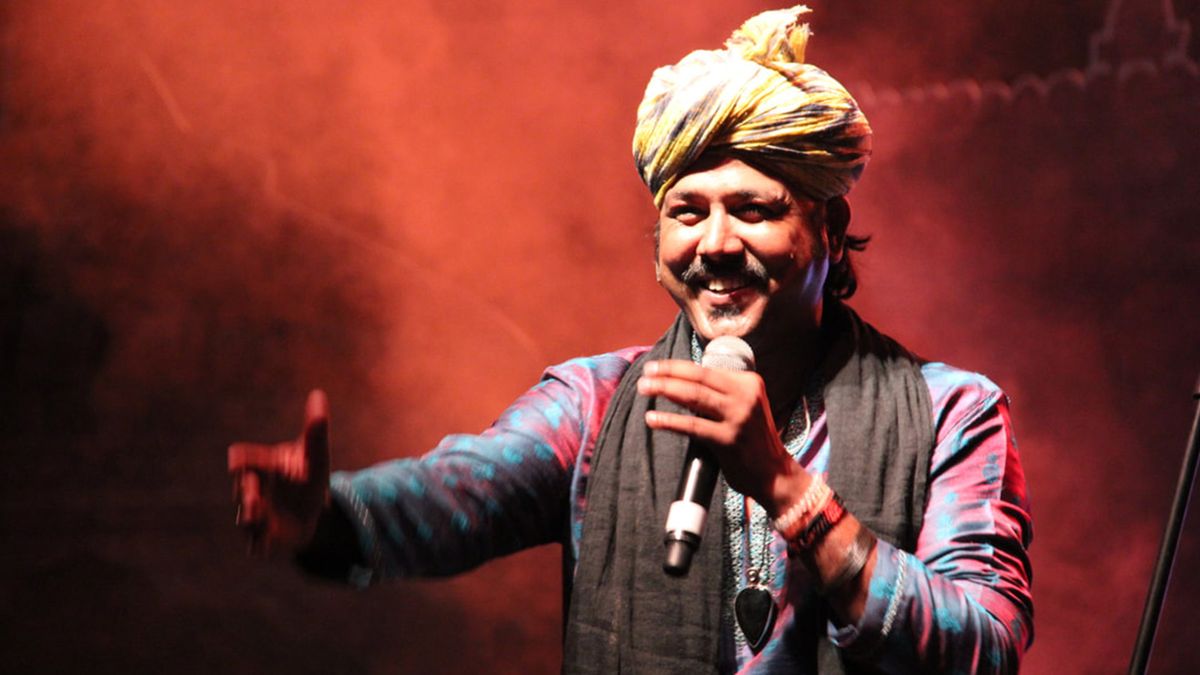If there’s one name that’s almost synonymous with Rajasthani folk music, it has to be Mame Khan. The Padma Shree awardee has been credited with taking Manganiyar folk music from the desserts of Jaisalmer to The Sydney Opera House. His chartbuster movie songs Bawre, Aave Re Hitchki, Mitho Lage and Chaudhary have helped popularise folk music with millennials. Khan is currently putting together a 50-member orchestra with artists in the age group of 17-70 years that will perform at the Nita Mukesh Ambani Cultural Centre (NMACC) in Mumbai on the 10th of November for the first time.

Edited excerpts:
1. Namaskar Mame Khan Ji. What’s keeping you busy these days?
Namaskar, khamma ghani. I am just back from rehearsals with my troupe. I will be launching my orchestra—the Folk Orchestra of Rajasthan—with a show at Nita Mukesh Ambani Cultural Centre (NMACC) in Mumbai. I have been dreaming of creating this orchestra for the last 16-17 years. It used to hurt me when people said that folk music is dying. That’s a myth! If folk music was dying we wouldn’t be performing for a two-thousand-strong audience in one of the best theatres in India and the world. My 50-member orchestra has 70-year old Barkat Khan as a vocalist and 17-year-old Dilvar Khan on the murali. So folk music is not going anywhere.
2. Interestingly you never wanted to be a singer. You were more inclined to play the dholak. Tell us more about this.
That’s true! I am from a small village called Satto in Jaisalmer, Rajasthan. Electricity came to my village only 15 years ago. In the Mangniyar community which I belong to, music is ingrained in us since birth. We are surrounded by music all the time. Growing up, I would wake up to the sound of my father’s riyaaz, my mother humming a tune while she cooked, and my sister singing as she swept the house… so there was a never a moment without music.
I started playing the dholak from a very young age and was part of a folk group that toured the world. But in 1999, when I came back to India after a six-month tour, my dholak did not come back from Brussels. It got lost in transit. I was supposed to go back to Brussels and join the tour but that also didn’t happen. I was heartbroken! That’s when my father suggested that I start singing with him on stage. That was the turning point in my life. This wasn’t my first time singing though—I was 14 when I sang professionally with my father for the first time at a function at Red Fort in front of the then Prime Minister Rajiv Gandhi. So it’s true that all things happen for good. In my case it happened for ‘very good’ (laughs).
3. What according to you makes the folk music of the Mangniyar community so popular?
I believe our folk music is truly from the people for the people. It’s music that blends easily with various other genres of music. Manganiyar folk music has everything–veer ras, prem ras, bhakti ras, shaurya ras… that’s the beauty of this music which has no boundaries. Let me tell you an interesting incident. Years ago I performed in France in front of an audience of 95% French people. I sang my father Rana Khan’s composition Lori (lullaby). When I finished there was pin-drop silence for about 15 seconds. After that the whole stadium stood up and started clapping and chanting ‘encore, encore.’ Can you imagine? They had no clue about the lyrics or our music. And then when I started singing the hook line of the song, everyone in the audience started singing with me. I had to sing the song thrice. That’s the sweetness and magic of our folk music.

4. Your association with Bollywood has helped bring folk music to the masses. What’s your experience of working with the Hindi film industry?
It has been amazing. It started with Bawre for Zoya Akhtar’s Luck By Chance. Can you imagine I recorded my first Bollywood song and didn’t even know it!
5. How?
I was singing with my troupe at Ila Arun’s daughter’s wedding when singer and music composer Shankar Mahadevan saw my performance. He invited me to Mumbai to sing a song. Assuming that it was for an event I went in my full stage attire. I had no idea that I was going to sing for a film. When I started singing everyone including Shankar, Loy, Zoya and Javed Akhtar ji were in a trance. I sang and left the studio. Days later a boy from my village came running to me with a newspaper that had a poster of Hrithik Roshan. There was Luck by Chance written on the top and my name ‘Mame Khan’ as the singer at the bottom. I was beyond happy. I even took my family to see the film and listen to my song. I then went on to sing for No One Killed Jessica, Sonchiriya, Mirzya, and so on.
6. You have been singing since the age of 12. How do you keep up the practise and your riyaaz?
I do over 100 shows a year. Imagine the number of flights, check-ins, check-outs, waiting at the airports, etc. So there is no dedicated time for practise. I listen to music. Listening is also a form of riyaaz. I listen to Ghulam Ali Khan, Lata Mangeshkar, Nusrat Fateh Ali Khan, and my father Rana Khan. And when you are doing so many shows it’s imperative to be fit both vocally and physically. Wherever I am, I make sure to jog in a park nearby, do yoga, and vocal warm-ups.

7. Last year you attended Cannes Film Festival as the first-ever folk artist in the world. How was that experience?
I had attended Cannes as a performer 23 years ago. At that time I didn’t know what Cannes was all about. Then I went back last year to represent India as a folk artist and walk the red carpet. It was one of the most memorable experiences to attend Cannes alongside stalwarts like A.R. Rahman, Nawazuddin Siddiqui, Prasoon Joshi, R. Madhavan, Aishwarya Rai, Deepika Padukone, and others. However, this achievement is not entirely mine. It’s a huge win for the entire Manganiyar community who live and breathe music, and keep it alive through generations of struggle. But there was a lot of drama that preceded the actual walk.
8. Please tell us.
I had initially decided to hand carry the outfit I was to wear on the red carpet. It was a Pathani suit with a blue jacket and turban designed by Anjuli Chakraborty. But at the last moment I checked it in with my other luggage. But as luck would have it, it never reached Cannes! My call time was 4:40 PM and there was no sign of my luggage till 4 PM. My manager suggested that I wear his suit. But my heart was set on the blue jacket. I decided to wait it out. Luckily my costume arrived at the last moment and I got dressed in five minutes and was able to walk the red carpet. It was both nerve-wracking and memorable. Thank god for that!
9. What are your views on fusion music?
I am not against fusion. In fact I feel it’s the best way to get millennials to fall in love with our old songs. I fuse old songs with new, fresh melodies. This helps to attract young generation to folk music. So fusion is good if it doesn’t lead to confusion. And most importantly never forget your roots. Your roots will keep you grounded. Never go too far from your roots.

10. How about your children? Are they also musically inclined?
Yes they are. But I want them to study first. Most artists in my orchestra (almost 99.9%) haven’t studied even till the fifth standard. I am myself not that educated. The talent in our country is amazing. Imagine if we pair it with education. That will be sone pe suhaga! So I tell my children to study. If there is talent they can always join this line, with or without my support.
11. What are your other passions?
I love cooking and feeding people just like my father did. Whenever I get the time I get into the kitchen and make laal maas, dal baati, gatta curry... I just love it!


